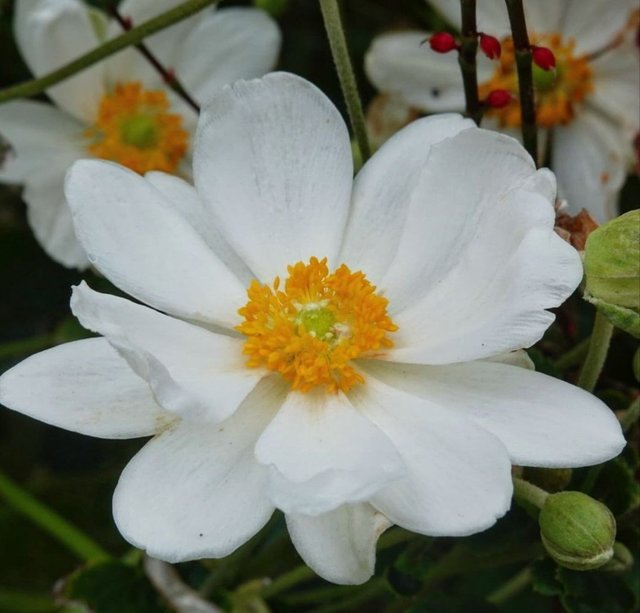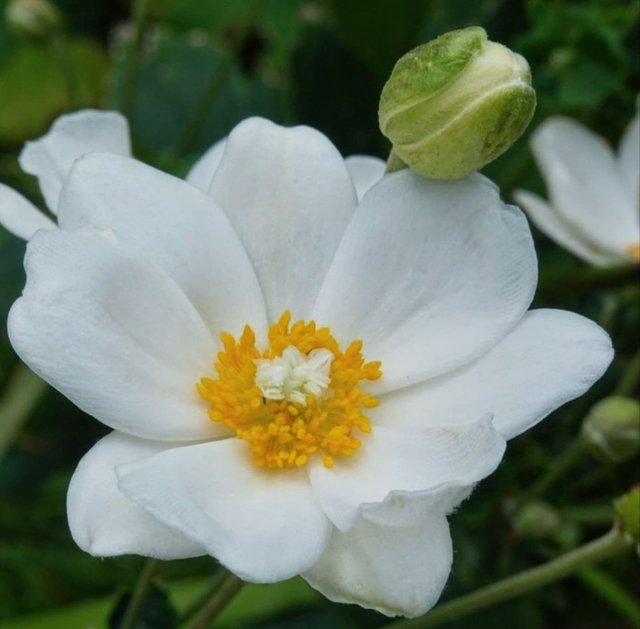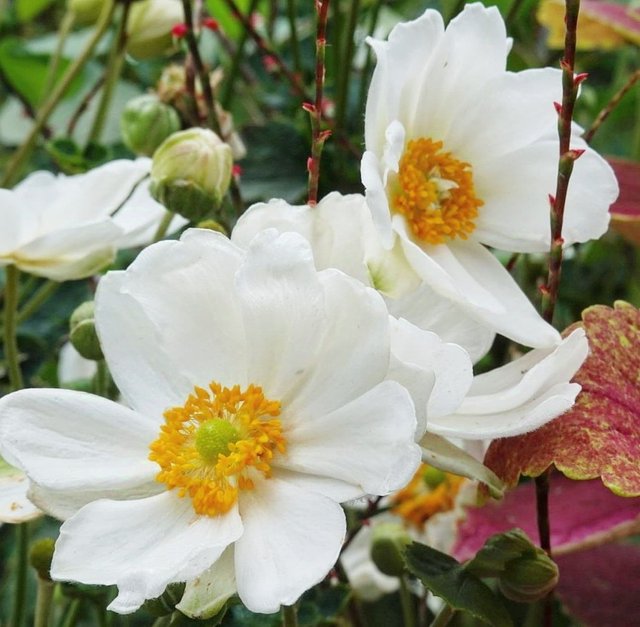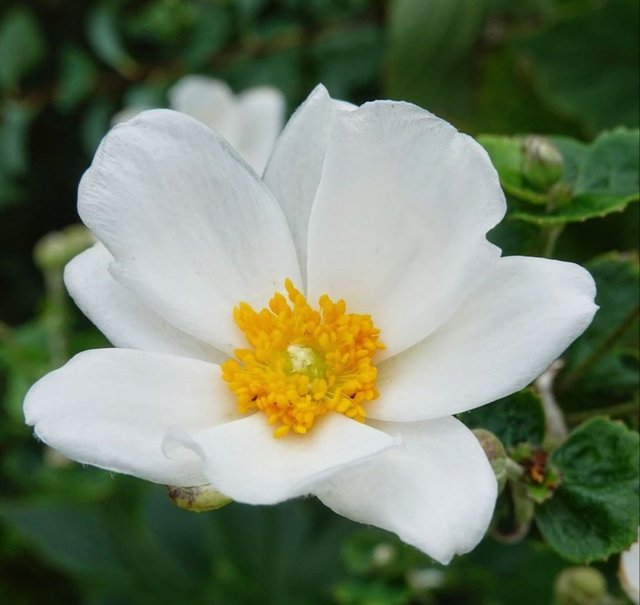The Japanese anemone is a beautiful perennial that belongs to the buttercup family, Ranunculaceae. Often called "windflower" because its name derives from the Greek word for wind, the Japanese anemone is a favorite among gardeners for its graceful appearance and ability to thrive in shady spots, providing late-season color in gardens. Though it is commonly referred to as "Japanese," this plant is native to China but was popularized in Japanese gardens during the 19th century before making its way to Europe and North America.
Botanical Description
Japanese anemones are renowned for their simple yet elegant flowers, which bloom in late summer and continue into fall, making them invaluable for extending the flowering season in gardens. The flowers range in color from pure white to soft pinks, rose, and deep magenta, typically with a prominent golden-yellow center of stamens that attracts pollinators.
The plant can grow between 2 to 4 feet tall, with some cultivars reaching even greater heights. They have long, slender stems that hold the delicate flowers aloft, giving them a floating appearance. The foliage is dark green, deeply lobed, and sometimes slightly fuzzy, forming a neat mound at the base. The plant spreads via underground rhizomes, which means it can gradually form a dense colony if conditions are right.
Growing Conditions and Care
One of the reasons the Japanese anemone is such a popular garden plant is its hardiness and adaptability. Here’s what you need to know about growing them:
Soil: Japanese anemones prefer well-drained, humus-rich soils that are slightly acidic to neutral. They thrive in soils that retain some moisture but are not waterlogged. They can tolerate a range of soil types, though loamy soils are ideal.
Sunlight: While these anemones are known for tolerating partial shade, they will also grow in full sun, provided the soil stays cool and moist. In hotter climates, a spot with dappled shade or afternoon shade is preferable to prevent the plants from wilting in the heat.
Watering: These plants appreciate regular watering, especially during dry spells, though established plants are somewhat drought-tolerant. A good layer of mulch can help retain moisture and keep the roots cool.




Thanks For Reading
Device Information
| Device | Redmi Note 10 Pro |
|---|---|
| Lens | 64 mp |
| Location | Bangladesh |
